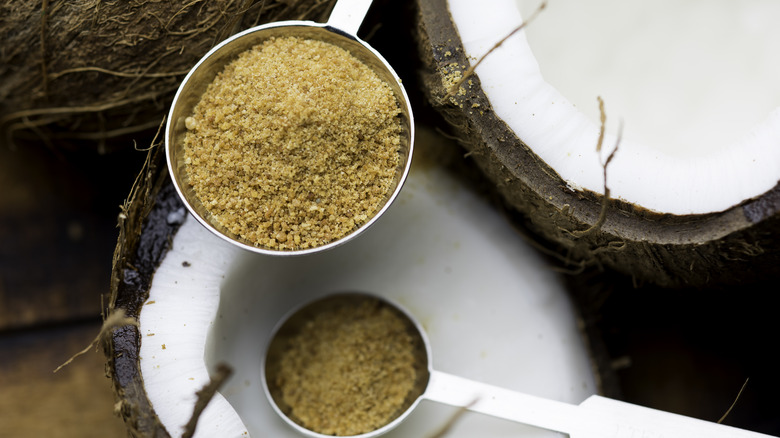The Origin Of Palm Sugar Dates Back More Than 2,000 Years
Although it may seem straightforward in flavor, sugar comes in many forms. For many, those white granules we use for baking are the first association. Such a processed variety was first crystallized in India around the start of the 2nd century. And from there, sugar cane-derived sweeteners came to be the most popular in many parts of the world.
However, this isn't the only type of sugar — there's also palm sugar. This sort is produced by boiling the palm flower sap of a range of tall palm trees in a method reminiscent of how maple syrup is extracted and made. Its origins lie just as deep, with manufacturing dating back at least 2,000 years. With its production stemming from different palm trees abundant in tropical regions, its use predates cane sugar in large parts of Southeast and Southern Asia, and likely Africa and the Canary Islands, too. While it may not be as prevalent in the U.S., it continues as an esteemed variety, especially in Asia, and is added to sweet and savory dishes across the continent.
Palm sugar has been processed from trees for centuries
Humans have long utilized palm products, with the trees' first derived sweetener likely coming straight from the liquid sap. Once it comes in contact with air, the juice immediately starts fermenting, however, reaching a level of approximately 4% alcohol within a few hours. Such a process may have been a form of inebriation for nearly 18,000 years, and the production of palm wine continues today. However, it's not a stable product — making it difficult to use in cooking.
As a result, the more labor-intensive process of palm sugar production arose centuries later. It likely started in the form of jaggery, an unprocessed, boiled-down mass of palm sap. And from there, it has gone through more refined preparation processes, eliminating the bold salty and earthy notes present in the product. Nevertheless, palm sugar retains notes of its parent tree, with flavors deviating based on the tree type, whether coconut, date, or palmyra, which has rich caramel notes. Spread across a vast geographic area, the tradition of harvesting sugar from palm trees arose in various places and has stood the test of time.

